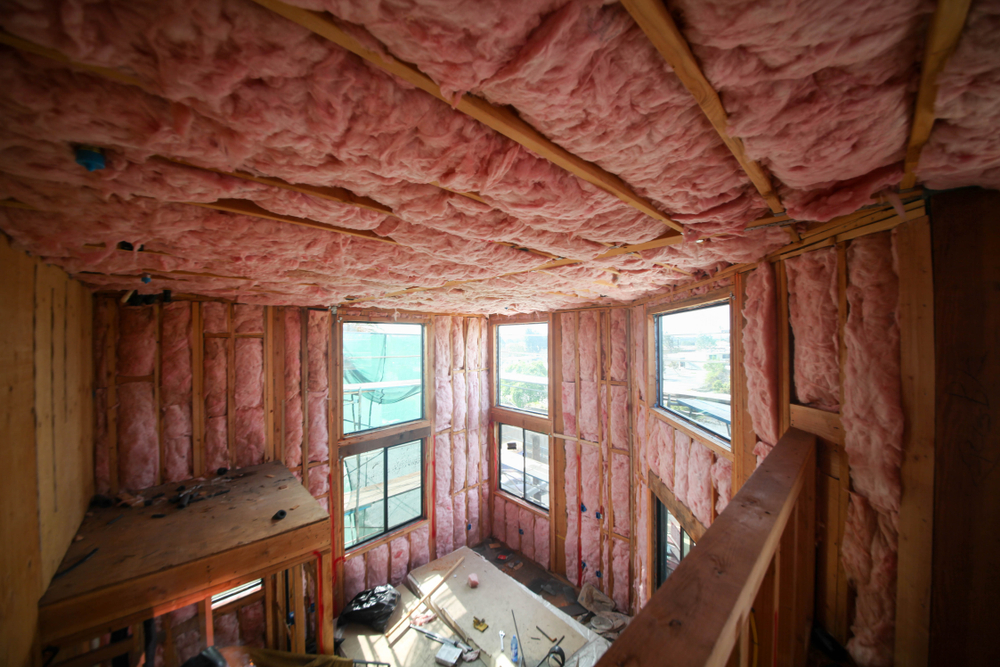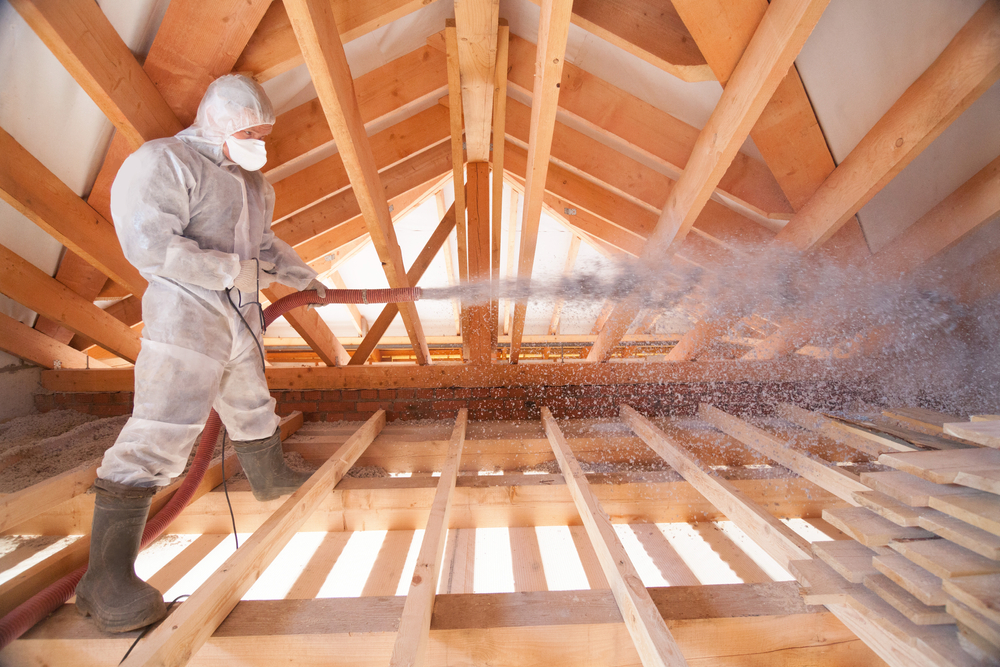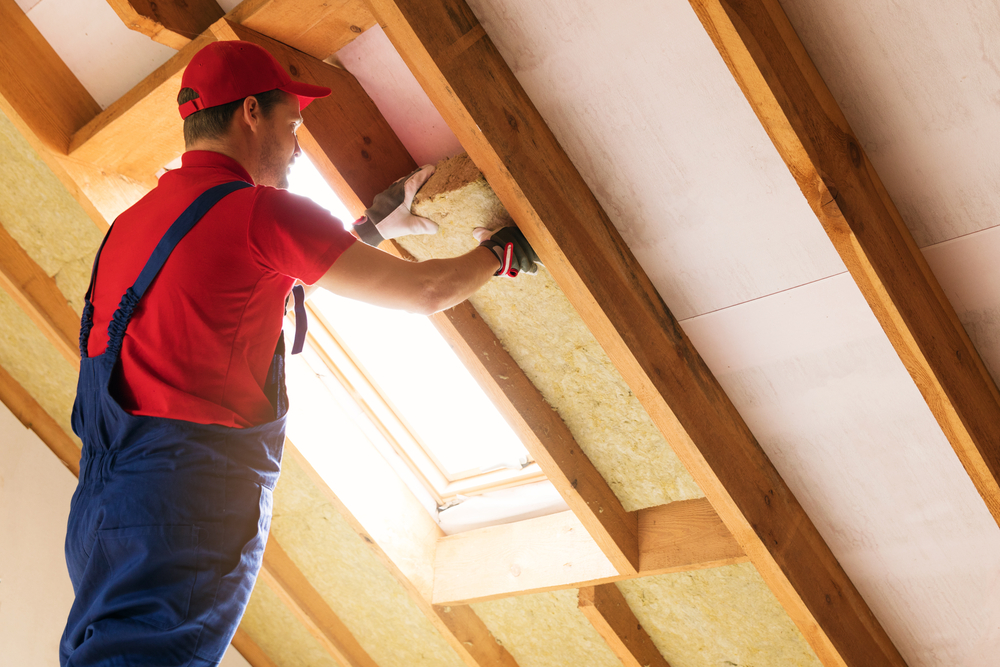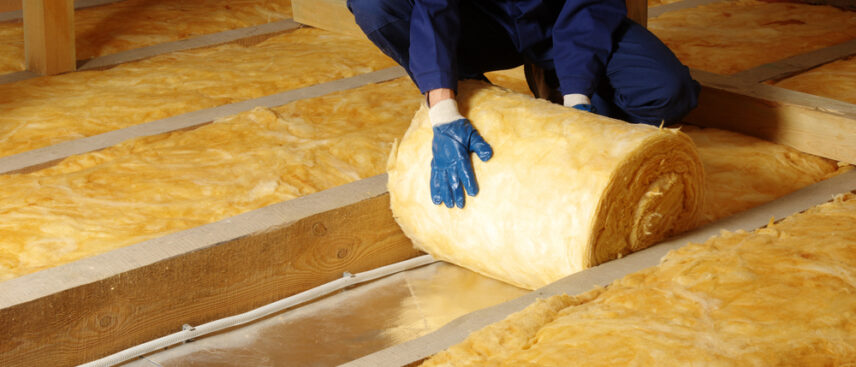Roof and attic insulation is pivotal in keeping your home comfortable year-round — cool in the summer and warm and cozy in the winter. However, if you don’t have enough insulation or your insulation installation has seen better days, it can’t do its job properly. This can escort in all sorts of complications, from uneven temperatures to sky-high energy bills.
That’s where professional roof and attic insulation services come in. With new insulation (or additional insulation to complement existing insulation), you can kiss those troubles goodbye and enjoy a comfortable home year-round.
Understanding the Importance of Proper Roof and Attic Insulation
Plenty of good-quality roof and attic insulation is integral to your home. It helps with everything from temperature regulation to air quality:
Temperature Regulation
The insulation in your attic plays a pivotal role in keeping your home comfortable throughout the year. In the summer, it helps keep toasty air from the sun’s heat on your roof and prevents the temperature in your home from rising, thus helping keep your home cool.

In the winter, it keeps the chill from the snow piling on your roof from cooling your warm, cozy home. Year-round, it complements the efforts of your HVAC system, keeping the cooled or warmed air where it belongs to promote an even temperature throughout your home.
Reduced Energy Bills
Properly installed roof and attic insulation can go a long way in reducing your energy bills. If you don’t have enough insulation or the existing insulation is in poor shape, your HVAC system will have to work harder to maintain a consistent, comfortable temperature in your home. This drives up your energy bill. So, by installing good-quality insulation in your attic, you can save on your annual energy bills!
Increased Home Value
Investing in high-quality and properly installed roof and attic insulation can boost your home’s value! It’s an appealing point for potential buyers, so new roof and attic insulation can be a valuable investment for those who plan to sell their homes.
Improved Indoor Air Quality
Proper roof and attic insulation creates a barrier against outdoor allergens and pollutants, sealing your home off and preventing them from creeping inside. Dust, pollen, and other airborne particles and pollutants can’t easily blow through insulation, which can help improve indoor air quality.
Signs You Need More Roof and Attic Insulation
When your insulation is in dire need of TLC or needs a bit more attention, there’s a good chance you’ll notice a few telltale signs, including:
High Energy Bills
The most common sign of insufficient roof and attic insulation shows up in your energy bills. If your energy bills spike for no reason, it could be due to insufficient or deteriorating insulation. The lack of quality insulation can cause your HVAC system to work overtime as it tries to keep your home cool, skyrocketing your energy bills.
You might notice that your energy bills are drastically higher than the same time last year or a few years ago for no apparent reason, which may indicate your insulation is worn out.
Drafty Rooms
Insulation helps keep drafty breezes from creeping into your home. If you notice some rooms feel drafty, it might be a sign that your insulation is tiring out or there isn’t enough insulation. This indicates that outside air is making its way into your home, resulting in seemingly random drafts in certain rooms.
Uneven Heating or Cooling
When there’s not enough insulation in your attic, or it’s deteriorating, you might notice that some rooms are warmer or cooler than usual. This lack of insulation can allow toasty air to sneak into your attic in the summer months, which may end up in your living space and cause strange warm spots.
Visible Signs of Aging Insulation
If your insulation looks like it has seen better days, it’s probably time for new insulation. You might notice common age signs, such as sagging, crumbling, or discoloration — all good indicators that your roof and attic need new insulation.
Types of Roof and Attic Insulation
Blown-In Insulation
Also known as loose-fill insulation, blown-in insulation is a fluffy insulating material made of fiberglass, cellulose, rock wool, or similar materials. It consists of tiny pieces, sort of like confetti. As the name implies, contractors literally blow the material into the roof and attic cavities using a long hose.

The installation method and confetti-like pieces allow it to conform to irregular-shaped spaces and provide excellent coverage, so it’s a strong contender.
Batt Insulation
Batt insulation is a flat, blanket-like insulation that comes pre-cut. While the pre-cut pieces often require some measuring and adjustments to fit into attic and roof cavities, they’re easy to work with and install. This insulation is usually made of fiberglass or rock wool and is surprisingly affordable, making it a budget-friendly pick.
Radiant Barrier Insulation
Radiant barrier insulation is an ultra-reflective material that can be installed alongside other types of insulation. Unlike traditional insulation, which absorbs radiant heat, this barrier reflects it away from whatever surface it’s installed on. It’s often installed with the reflective foil facing the attic space, helping to improve energy efficiency, especially in hot climates.
Benefits of Professional Roof and Attic Insulation Installation
While you could DIY your roof and attic insulation installation, this is usually a project best left to the professional, capable and experienced hands of a professional. When you go the professional route, you’ll get to enjoy various benefits, including:
Expertise and Efficiency
Different areas and homes may require different types of insulation, thicknesses, and installation techniques. Your insulation contractor will evaluate your home and insulation needs to determine the best fit. Their expertise pays off in the end, promoting overall efficiency and effectiveness for your new investment.
Safety Considerations
Improperly installed insulation can open the door to a host of issues, including health concerns and structural issues. For example, it can create issues with condensation, creating the perfect environment for mold and mildew growth. This can snowball, raising the risk of mold-related health problems and structural damage due to mold and moisture.

So, by avoiding the DIY route and opting for professional assistance, you can skirt these problems and rest assured knowing your insulation was installed correctly.
Code Compliance
Building codes and safety regulations can vary by state and municipality. Your insulation contractor will be well-versed in the codes and regulations that apply in your area, so by going the professional route, you can ensure you’re compliant with them.
Long-Term Cost Savings
While the upfront cost of professional insulation installation might seem steep, your investment can pay off in the long run. Over time, it can help drop your energy bill, helping offset that initial cost of new insulation.
Cost of Roof and Attic Insulation Services
Each home and roof or attic insulation installation is different, so the costs associated with these services can vary dramatically. Factors like insulation type, attic size, and existing insulation levels will drive the price, determining the number on your final bill.
On average, homeowners in the United States pay approximately $2,500 for roof and attic insulation services. Of course, since so many factors contribute to the cost, the actual total may vary from as little as $500 to as high as $4,000 or more. It all depends on the specifics of your home and installation.

To ensure you get the best price for the services you need, get a couple of quotes from qualified insulation contractors in your area. This way, you can compare the prices and services offered and confidently decide what’s best for your home and budget.
Finding a Qualified Insulation Contractor
Installing roof and attic insulation requires know-how, so you must choose a qualified contractor to complete the job. A few things to look for include:
Experience and Licensing
Look for a contractor who specializes in or has extensive experience with installing attic and roof insulation. They should have all applicable licenses required by state and federal standards. These factors help ensure that you’re getting someone who knows what they’re doing and is licensed to do it.
Positive Online Reviews and References
A contractor’s online reviews and references can give you valuable insights into what it’s like to work with them. So, as you look for a qualified insulation contractor, browse through online reviews. Ideally, they should have plenty of positive reviews. If the reviews are littered with negative feedback and experiences, steer clear.
You can even ask the contractor for references — sometimes, they have a few previous customers who are happy to share their experiences.
Insurance and Warranties
The best insulation installers have well-rounded insurance and provide top-of-the-line warranties to back their work. At a minimum, your chosen contractor should have robust liability insurance. This protects you as the homeowner in case of an injury or accident while working on your home.
Additionally, they should offer strong warranties that back your investment. Ideally, choose a contractor that offers a workmanship warranty on top of the manufacturer’s warranty. This way, if there’s a problem with your new insulation due to improper installation, it should be covered.
